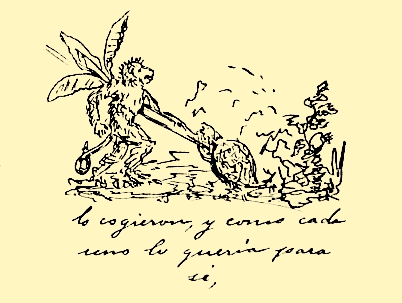|
Bulaklak Magazine
''Bulaklak Magazine'' (literally “Flower Magazine”), subtitled ''Hiyas ng Tahanan'' (“Gem of the Home"), was a Tagalog-language magazine that was first published in the Philippines on April 14, 1947. Published by the Social and Commercial Press, a company owned by Beatriz M. de Guballa, ''Bulaklak Magazine'' was similar in content and structure to ''Liwayway'' magazine, featuring narratives in prose, serials, poetry, entertainment news, comic strips, crossword puzzles, caricatures, and health tips, among other regular features. It was on July 23, 1947, in the Volume 4, #17 issue when the superheroine character, which would become Darna in 1950s- then known as Varga - appeared on the pages of ''Bulaklak Magazine''. The character was developed by Mars Ravelo Marcial "Mars" Ravelo (October 9, 1916 – September 12, 1988) was a Filipino comic book cartoonist and graphic novelist who created ''Darna, Dyesebel, Captain Barbell, Lastikman'', ''Bondying'', '' Varga'', ''Wanted ... [...More Info...] [...Related Items...] OR: [Wikipedia] [Google] [Baidu] |
Tagalog-language
Tagalog (, ; ; ''Baybayin'': ) is an Austronesian language spoken as a first language by the ethnic Tagalog people, who make up a quarter of the population of the Philippines, and as a second language by the majority. Its standardized form, officially named ''Filipino'', is the national language of the Philippines, and is one of two official languages, alongside English. Tagalog is closely related to other Philippine languages, such as the Bikol languages, Ilocano, the Bisayan languages, Kapampangan, and Pangasinan, and more distantly to other Austronesian languages, such as the Formosan languages of Taiwan, Indonesian, Malay, Hawaiian, Māori, and Malagasy. Classification Tagalog is a Central Philippine language within the Austronesian language family. Being Malayo-Polynesian, it is related to other Austronesian languages, such as Malagasy, Javanese, Indonesian, Malay, Tetum (of Timor), and Yami (of Taiwan). It is closely related to the languages spoken in the Bico ... [...More Info...] [...Related Items...] OR: [Wikipedia] [Google] [Baidu] |
Philippines
The Philippines (; fil, Pilipinas, links=no), officially the Republic of the Philippines ( fil, Republika ng Pilipinas, links=no), * bik, Republika kan Filipinas * ceb, Republika sa Pilipinas * cbk, República de Filipinas * hil, Republika sang Filipinas * ibg, Republika nat Filipinas * ilo, Republika ti Filipinas * ivv, Republika nu Filipinas * pam, Republika ning Filipinas * krj, Republika kang Pilipinas * mdh, Republika nu Pilipinas * mrw, Republika a Pilipinas * pag, Republika na Filipinas * xsb, Republika nin Pilipinas * sgd, Republika nan Pilipinas * tgl, Republika ng Pilipinas * tsg, Republika sin Pilipinas * war, Republika han Pilipinas * yka, Republika si Pilipinas In the recognized optional languages of the Philippines: * es, República de las Filipinas * ar, جمهورية الفلبين, Jumhūriyyat al-Filibbīn is an archipelagic country in Southeast Asia. It is situated in the western Pacific Ocean and consists of around 7,641 islands t ... [...More Info...] [...Related Items...] OR: [Wikipedia] [Google] [Baidu] |
Liwayway
''Liwayway''''Liwayway'' Komiklopedia, The Philippine Komiks Encyclopedia, Komiklopedia.wordpress.com, April 2, 2007 ( Tagalog word meaning "dawn") is a leading Tagalog weekly magazine published in the since 1922. It contains Tagalog serialized novels, short stories, poetry, serialized comics, essays, news features, entertainment news and articles, and many others. In fact, it is the oldest Tagalog magazine in the Philippines. Its sister publications are '' Bannawag'', '' |
Philippine Comics
Comics in the Philippines ( fil, Komiks}) have been widespread and popular throughout the country from the 1920s to the present. Komiks were partially inspired by American mainstream comic strips and comic books during the early 20th century. The medium first became widely popular after World War II. Its mainstream appeal subsided somewhat during the latter part of the 20th century with the advent of other mass-media forms such as telenovelas, but experienced a renaissance in the mid-2010s with the increasing popularity of artists such as Gerry Alanguilan, Arnold Arre, Budjette Tan, Kajo Baldisimo, and the rise of fan communities through comic book conventions such as komikon. Webcomics produced by independent Filipino web-based artists have caught the attention of local and foreign readers. The word ''komiks'' is simply the English word "comics," adapted to fit the orthography of native Filipino languages such as Tagalog. History Origins While the first indigenous c ... [...More Info...] [...Related Items...] OR: [Wikipedia] [Google] [Baidu] |
Darna
Darna () is a Filipina superheroine created by writer Mars Ravelo and artist Nestor Redondo. The character's first appearance was in ''Pilipino Komiks'' (Ace Publications, Inc.) #77 on May 13, 1950. Darna is a retooling of Ravelo's earlier character, Varga, whose stories he wrote and illustrated himself. This character first appeared in ''Bulaklak Magazine'', Volume 4, #17 on July 23, 1947. Ravelo left the Bulaklak Magazine publications due to differences with the publication's editors. One of the most popular Filipino superheroes, Darna has appeared in many films and several television series through the decades which have far overshadowed her actual comics tenure. The 2003 Mango Comics miniseries revealed that Darna is a deceased extraterrestrial warrior magically manifesting herself through a woman from Earth named Narda who summons her by shouting her name. As Darna, she stands up for those who cannot fend for themselves. She fights against common criminals as well as grea ... [...More Info...] [...Related Items...] OR: [Wikipedia] [Google] [Baidu] |
Varga (comics)
Varga is a Filipino comics superhero created by Mars Ravelo. He wrote and illustrated Varga for Bulaklak Magazine, appearing first in the magazine's No. 17, Vol. 4 (July 23, 1947) issue. A falling out with some of the magazine's editors caused Ravelo to resign from Bulaklak and transfer to Pilipino Komiks (Ace Publications), where he re-launched his superhero. Ravelo renamed her Darna, an anagram of the superhero's mortal alter-ego name Narda. Darna's adventures in Pilipino Komiks began in the No. 77 (May 13, 1950) issue, where she was illustrated by Nestor Redondo.History marsravelodarna.net Not to be confused with the similarly-named Edwin Samonte character, Varga: The Amazing Iron Lady, which first appeared in Super Action Komiks No. 191, April 11, 1989. Origin It can also be noted that Varga was a character archived twice. Varga ...[...More Info...] [...Related Items...] OR: [Wikipedia] [Google] [Baidu] |
Mars Ravelo
Marcial "Mars" Ravelo (October 9, 1916 – September 12, 1988) was a Filipino comic book cartoonist and graphic novelist who created ''Darna, Dyesebel, Captain Barbell, Lastikman'', ''Bondying'', '' Varga'', ''Wanted: Perfect Mother'', ''Hiwaga'', ''Maruja'', ''Mariposa'', ''Roberta'', ''Rita'', ''Buhay Pilipino,'' ''Jack and Jill'', ''Flash Bomba'', ''Tiny Tony'', and '' Dragonna'' among others. Early life Mars Ravelo was born on October 9, 1916, when America still occupied the Philippines. Career Ravelo started out as a cartoonist, then as a writer, and later on as editor-in-chief for two publications houses and for several film companies. He later established his own company, RAR. Ravelo created the characters of Darna the super heroine, Dyesebel the love-lorn mermaid, and Captain Barbel the super hero, Facifica Falayfay, and the duo of Jack & Jill. He also created the drama about a young orphaned girl named Roberta for Sampaguita Pictures. Ravelo wrote the movie adaptatio ... [...More Info...] [...Related Items...] OR: [Wikipedia] [Google] [Baidu] |
1947 Comics Debuts
It was the first year of the Cold War, which would last until 1991, ending with the dissolution of the Soviet Union. Events January * January–February – Winter of 1946–47 in the United Kingdom: The worst snowfall in the country in the 20th century causes extensive disruption of travel. Given the low ratio of private vehicle ownership at the time, it is mainly remembered in terms of its effects on the railway network. * January 1 - The Canadian Citizenship Act comes into effect. * January 4 – First issue of weekly magazine ''Der Spiegel'' published in Hanover, Germany, edited by Rudolf Augstein. * January 10 – The United Nations adopts a resolution to take control of the free city of Trieste. * January 15 – Elizabeth Short, an aspiring actress nicknamed the "Black Dahlia", is found brutally murdered in a vacant lot in Los Angeles; the mysterious case is never solved. * January 16 – Vincent Auriol is inaugurated as president of France. * January 19 – Ferry ... [...More Info...] [...Related Items...] OR: [Wikipedia] [Google] [Baidu] |
1947 Establishments In The Philippines
It was the first year of the Cold War, which would last until 1991, ending with the dissolution of the Soviet Union. Events January * January–February – Winter of 1946–47 in the United Kingdom: The worst snowfall in the country in the 20th century causes extensive disruption of travel. Given the low ratio of private vehicle ownership at the time, it is mainly remembered in terms of its effects on the railway network. * January 1 - The Canadian Citizenship Act comes into effect. * January 4 – First issue of weekly magazine ''Der Spiegel'' published in Hanover, Germany, edited by Rudolf Augstein. * January 10 – The United Nations adopts a resolution to take control of the free city of Trieste. * January 15 – Elizabeth Short, an aspiring actress nicknamed the "Black Dahlia", is found brutally murdered in a vacant lot in Los Angeles; the mysterious case is never solved. * January 16 – Vincent Auriol is inaugurated as president of France. * January 19 – Ferry ... [...More Info...] [...Related Items...] OR: [Wikipedia] [Google] [Baidu] |
Comics Magazines Published In The Philippines
a medium used to express ideas with images, often combined with text or other visual information. It typically the form of a sequence of panels of images. Textual devices such as speech balloons, captions, and onomatopoeia can indicate dialogue, narration, sound effects, or other information. There is no consensus amongst theorists and historians on a definition of comics; some emphasize the combination of images and text, some sequentiality or other image relations, and others historical aspects such as mass reproduction or the use of recurring characters. Cartooning and other forms of illustration are the most common image-making means in comics; '' fumetti'' is a form that uses photographic images. Common forms include comic strips, editorial and gag cartoons, and comic books. Since the late 20th century, bound volumes such as graphic novels, comic albums, and ' have become increasingly common, while online webcomics have proliferated in the 21st century. The history ... [...More Info...] [...Related Items...] OR: [Wikipedia] [Google] [Baidu] |
Defunct Magazines Published In The Philippines
{{Disambiguation ...
Defunct (no longer in use or active) may refer to: * ''Defunct'' (video game), 2014 * Zombie process or defunct process, in Unix-like operating systems See also * * :Former entities * End-of-life product * Obsolescence Obsolescence is the state of being which occurs when an object, service, or practice is no longer maintained or required even though it may still be in good working order. It usually happens when something that is more efficient or less risky r ... [...More Info...] [...Related Items...] OR: [Wikipedia] [Google] [Baidu] |
Entertainment Magazines
Entertainment is a form of activity that holds the attention and interest of an audience or gives pleasure and delight. It can be an idea or a task, but is more likely to be one of the activities or events that have developed over thousands of years specifically for the purpose of keeping an audience's attention. Although people's attention is held by different things because individuals have different preferences, most forms of entertainment are recognisable and familiar. Storytelling, music, drama, dance, and different kinds of performance exist in all cultures and were supported in royal courts and developed into sophisticated forms, over time becoming available to all citizens. The process has been accelerated in modern times by an entertainment industry that records and sells entertainment products. Entertainment evolves and can be adapted to suit any scale, ranging from an individual who chooses a private entertainment from a now enormous array of pre-recorded produc ... [...More Info...] [...Related Items...] OR: [Wikipedia] [Google] [Baidu] |






